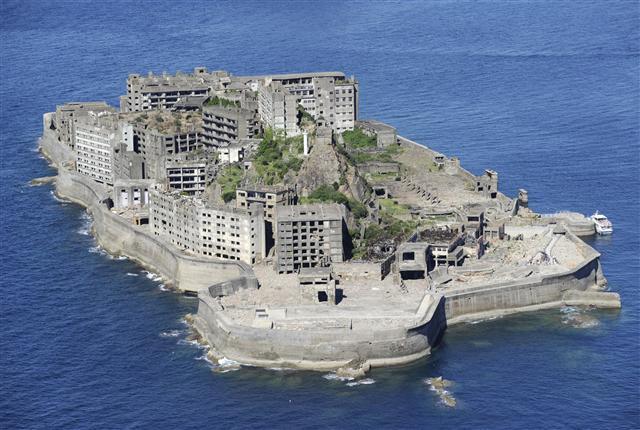 |
|
“Battleship Island” off the coast of Nagasaki was the site of forced mobilization of Korean workers. Over 100 people died working in the island’s coal mines during the 1940s. (Hankyoreh Archive)
|
Planned Tokyo center is viewed as being too far away from the historical site of actual mobilizations
The South Korean government expressed dismay at the Japanese government’s announcement of plans to build an information center on the forced mobilization of Korean workers on Hashima (Battleship) Island and at other sites – but in Tokyo, 980 kilometers from where the mobilization occurred. According to a Japanese situation report on the “preservation of Meiji Industrial Revolution heritage” released on Dec. 5 by the UNESCO World Heritage Centre (WHC), the Japanese government announced plans to build an “industrial heritage information center” in Tokyo on 23 Industrial Revolution heritage sites – including Hashima – during the 2019 accounting year. At the time of the July 2015 World Heritage registration of key sites in Japan’s modern industrial revolution, the Japanese government said that “Koreans and others were mobilized against their will into forced labor during the 1940s” at industrial sites in Hashima and elsewhere. It also announced that it would “establish an information center to honor the victims.” The measure was adopted after the South Korean government lodged an objection to the registration with the WHC, noting that Koreans had been pressed into forced labor at Hashima and six other industrial sites. Because 23 of the Japanese heavy and chemical industry sites registered at the time were concentrated in Kyushu and Yamaguchi Prefecture, many predicted the information center would be built in the area where they were located. In a Ministry of Foreign Affairs spokesperson’s statement on Dec. 5, the South Korean government expressed “dismay at the content of the report submitted by Japan on the progress of implementation of follow-up measures related to the World Heritage registration of Japanese modern industrial sites.” It also urged Japan to “faithfully and swiftly implement follow-up measures to honor victims of forced labor as Japan has pledged to the international community.” The report, submitted by Tokyo after the WHC’s recommendation for it to prepare an interpretive strategy for understanding the “overall history” of the sites, indicates that the information center will “provide comprehensive information on Meiji Industrial Revolution sites,” including “the workers’ stories.” While the report did add that the specifics were “under deliberation,” some voice concerns that Tokyo might attempt to avoid dealing directly with the forced mobilization of Koreans. By Kim Ji-eun, staff reporter Please direct questions or comments to [english@hani.co.kr]






